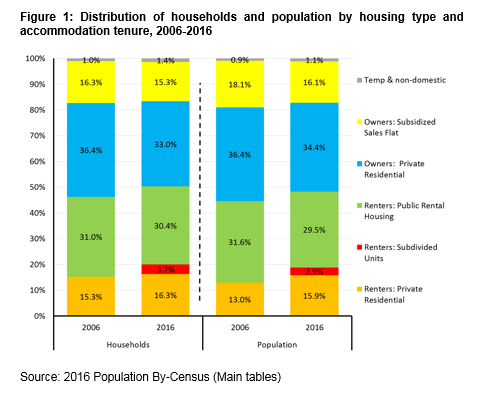(This essay was published in the South China Morning Post on 28 March 2018.)
The people of Hong Kong may have different views about many issues, but everyone agrees that the housing shortage is our biggest domestic problem.
Many think the problem can only be resolved in a fundamental way by increasing housing supply. But such relief will take time. It takes over 10 years to reclaim land and develop residential flats, and nearly 10 years to convert agricultural land to residential use.
Even among those favoring more building, there are differences about what kind of housing should be built. Some groups believe the government should build more public rental housing units to benefit the least well-off who have suffered most from the severe housing shortage.
Others worry about the vanishing hopes of the middle class for homeownership and want government to build more subsidized public flats.
Still other groups want government to control rents and socialize housing supply more widely.
All these groups to varying degrees advocate for the interests of their constituencies. But we need a more macro perspective to help bring effective relief to our severe housing shortage.
Using census data, I examined changes between public and private housing occupants and renters and owner-occupiers between 2006 and 2016. I found extremely important evidence of how scarce and valuable housing resources are becoming less efficiently allocated.
Although many more public rental housing units were built over the decade, the total number of people living in public rental housing remained about the same, with the result that the average number of persons living in each unit fell. At the same time, the total number of people living in private housing increased a lot and the average number of persons living in each flat increased.
In numeric terms, 255,458 new residential units were built, comprising 138,959 public rental flats and 7,245 subsidized public flats (57.2 per cent of the total), and 109,254 private flats (42.8 per cent).
Amazingly, the total number of people housed in the public rental sector only increased from 2,096,126to 2,100,126. In other words, while 138,959 new public rental flats were completed, a mere 4,000 additional people were accommodated in such flats. Meanwhile, the Waiting List increased from 97,300 applicants to 288,300.
Similarly, despite the addition of 7,245 new subsidized public flats, the number of people living in that sector actually fell by 59,550 (to 1,144,774 people).
The situation for private residential flats was entirely different. The total number of people housed in private flats increased from 3,278,708to 3,789,474 – an additional 510,766 persons, even though the supply of new private flats was a modest 109,254 units.
Such disparities account for why sub-divided units have mushroomed in the private residential rental market. Estimates from the 2016 By-Census indicate there were about 91,787households (or 18.3 per cent of households in the private rental market) living in sub-divided units.
Between 2006 and 2016, private flat renters increased from 13 per cent of the population to 18.8 per cent, while public flat renters decreased from 31.6 per cent to 29.5 per cent (see Figure 1). Yet during this period more public rental flats were built than private flats.
These changes together clearly reveal that the middle class has suffered most from Hong Kong’s severe housing situation. Their hopes of owning or renting private flats have vanished. And their housing condition has significantly deteriorated in terms of affordability, available supply, and space.
The situation explains why the Chief Executive’s proposed Starter Home Scheme is especially welcomed among middle class families, who have borne the brunt of crowded living conditions.
Evidently, our housing policies, especially those affecting public housing, have made our housing problem worse. But there is an opportunity here to revise our policies and bring some quick, substantive relief.
How so?
Currently, public housing tenants do not own their homes so they have no incentive to economize on their use.
Moreover, regulations disallow them from renting out their flats to others. Even worse are the incentives to evict adult working children in order to avoid breaching the double-rent threshold. Owners of subsidized ownership flat are also not allowed to rent out their premises if they have an outstanding unpaid premium.
Common sense tells us that a substantial fraction of owners and tenants in public housing flats would be keen to rent out part or all of their flat.
Hong Kong has over 1.2 million owned and rented public housing units, so if only 5 per cent of occupants made available their space for rent, then a new source of housing supply would be unleashed. Sub-divided housing rents in the private market would immediately decline.
This solution has hardly any losers and plenty of winners. To be sure, a short-term solution does not negate the need for medium and long-term answers. But I believe it would make it easier for society to negotiate future progress.
Unleashing market forces within the public housing sector would mean privatizing the public housing stock and refocusing public housing towards homeownership. How this can be done in a fair and efficient manner needs another article.


